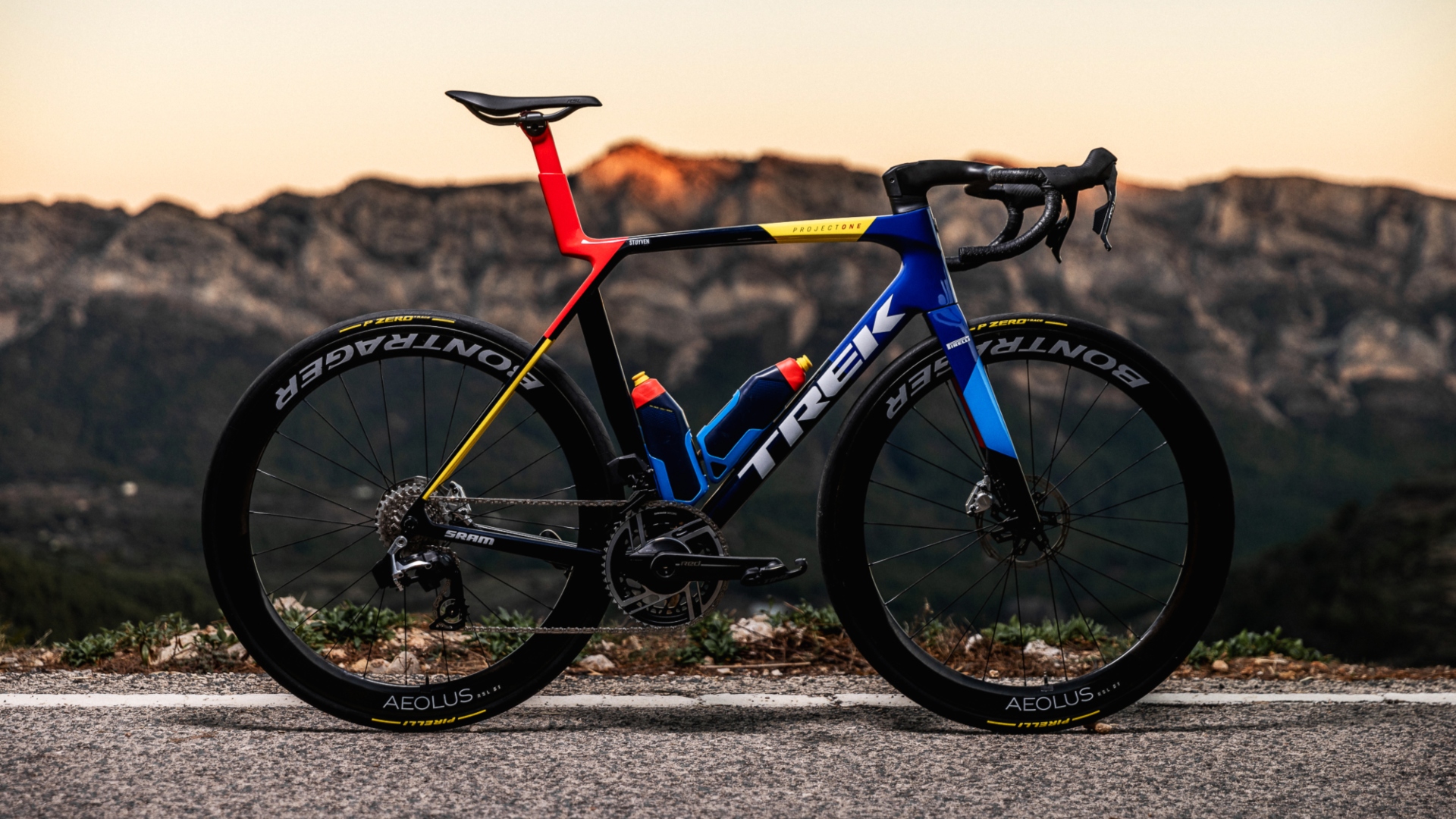
Trek has announced the release of the newest Madone, the 8th generation of its aero road bike.
Wait? Another Madone?
Certainly, it’s unusual for a bike brand to launch a model only a couple of years after the last update, especially when that version featured some significant new technology. But Trek I’m sure would argue that the Gen 8 Madone is no ordinary bike. What started life as the next Émonda has eventually evolved into a merging of the two platforms to leave one race bike that Trek believes can do it all.
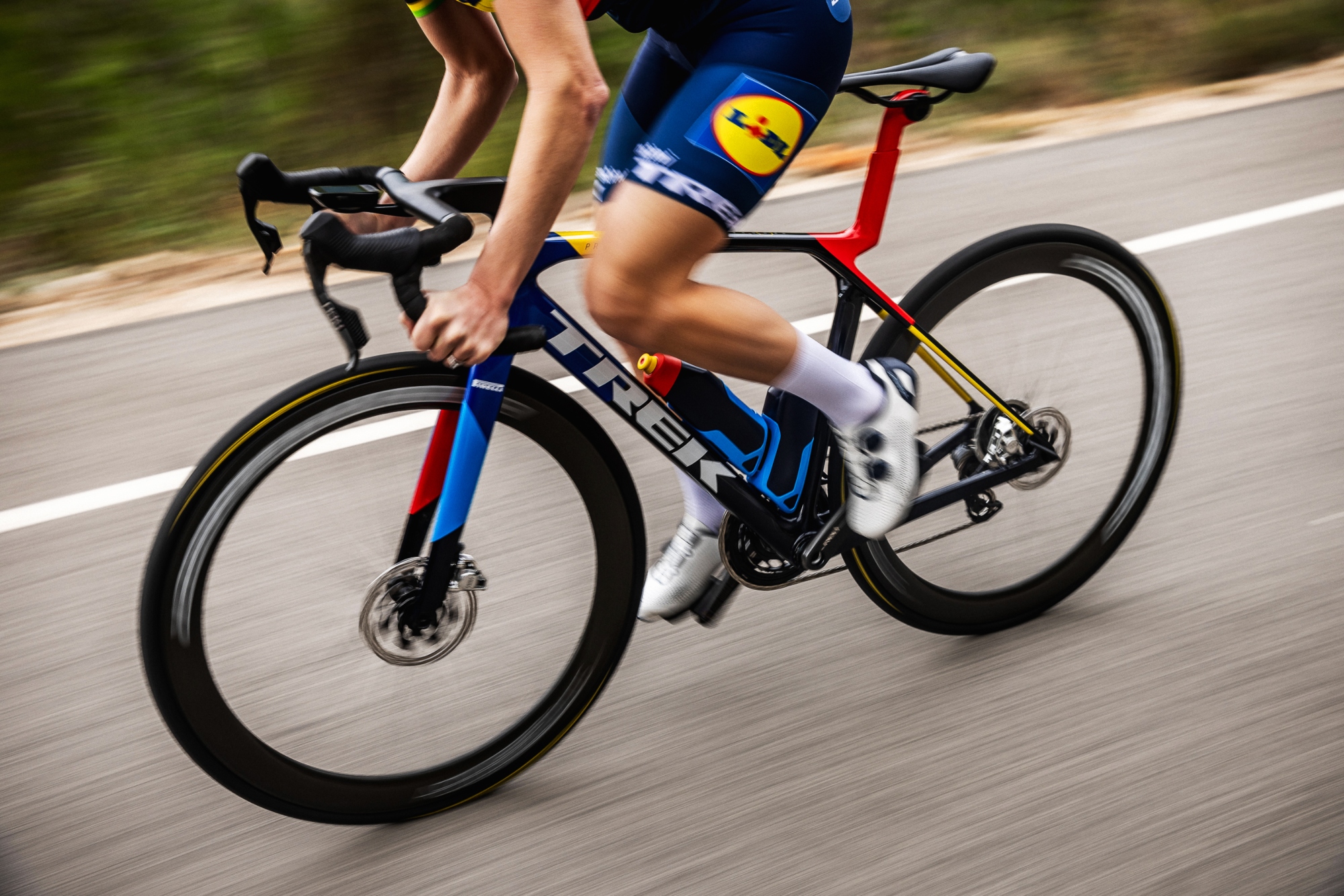
The new Madone claims to be as light as the current Émonda SLR yet still as fast as the outgoing Madone. Trek says the Gen 8 SLR frameset, at 1,146g, is 320g lighter than the Gen 7 thanks largely to the introduction of its new 900 Series OCLV carbon and the new slimmer tube shapes. The carbon benefits from what Trek describes as a “more efficient molding process”, which translates to less material used.
Despite this weight reduction, it still claims to be as fast as the Gen 7 Madone when tested with a rider and using the new RSL aero bottles and cages (more on those later), and some 77 seconds faster per hour than the Émonda SLR.
A single race bike
The concept of a single performance race bike isn’t new. But it might be the future as advancements in both materials and computational fluid dynamics (CFD) enable engineers to find the confluence of ‘lightweight’ and ‘aerodynamic’ like never before. In financially challenging times, reducing the number of race bikes in the line also means lower production costs.
Trek says the best of both worlds is possible, with the Gen 8 Madone providing previous Émonda riders with improved aerodynamics and existing Madone customers with a far lighter bike that can excel when the road points up. At a professional level, it means the Lidl-Trek team will no longer have the choice - or dilemma - of matching bikes to stage or race. Indeed the team was instrumental in the Madone’s development.
So how did the bike come to fruition?
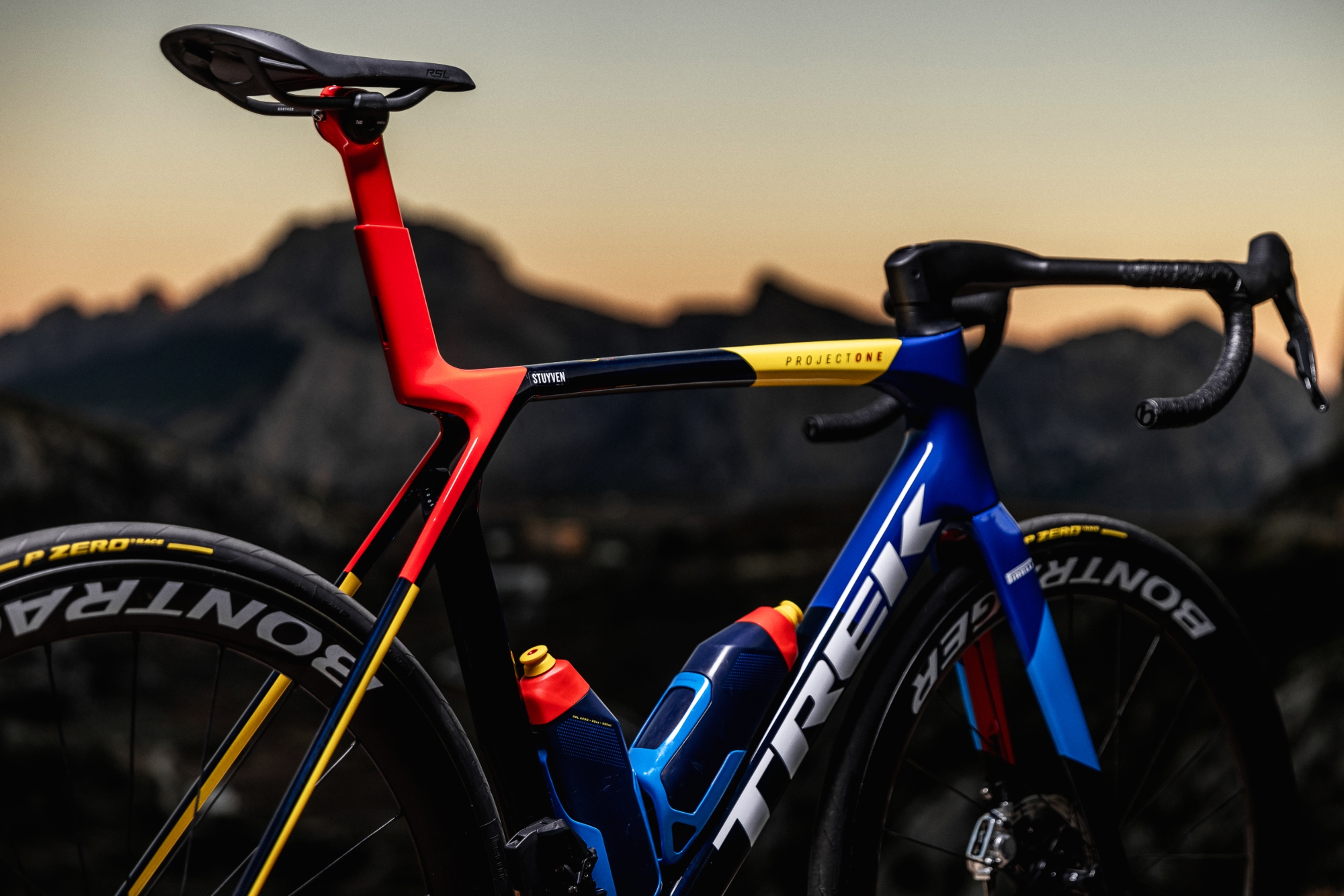
Trek says that early on in its work on what was then the next generation Emonda it became clear that the aero gap between the existing Emonda and the Madone could be reduced, making the single bike idea a possibility. The key would be to ensure that this could be done without compromise.
A series of prototypes were produced with Trek using “hundreds of CFD and structural analysis iterations” that led to three bikes being tested further in a wind tunnel. Of these one stood out as having the potential to be ‘Emonda light, Madone fast’. After further optimisation, the path to the new Madone, created as a single race bike, was clearer and centered around some interesting new aero shapes Trek calls Full System Foil.
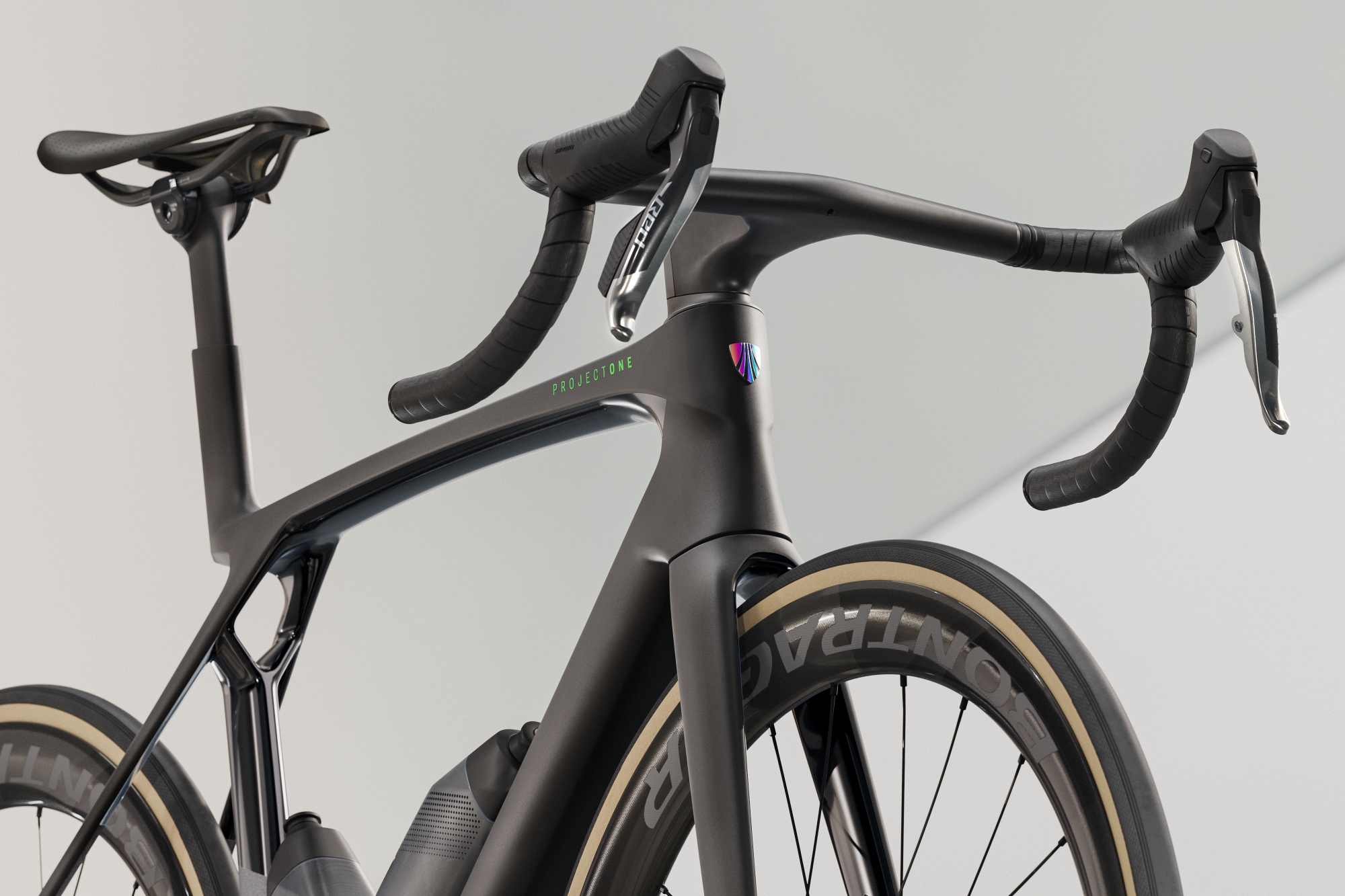
Gone are the Kammtail shapes of old, with the replacements a product of a more flexible cross-section generator. This allows for a greater variety of shapes that can then be altered using the software to test both the aerodynamics and structural efficiency. From here a set of cross sections was created that best combined low weight with effective aerodynamic properties; they have a notably more rounder back end than the previous Kammtail shapes.
Once the shapes were set, the engineers then worked on finding the optimum place for them on the frame. Trek says that the downtube, for example, favours structural efficiency over aerodynamics because low-drag shapes are less important in this area of the bike. At the other end of the spectrum, the seat tube and seat post need to be as aero as possible to help negate the drag that's created in that area by the rider’s legs increasing airflow.
A whole rider system
Indeed, designing shapes that work optimally with a rider on board appears crucial to the look and performance of the new Madone. Wind tunnel and real-world testing show that a rider greatly alters the flow of air around a bike. Hence Trek’s whole rider system, which factors in bike, rider and components, as well as cages and bottles.
The latter, called the RSL Aero Bottle and Cage System, was designed in conjunction with the frame and wheel cross-sections to create a virtual airfoil; at 45kph Trek says the bottles save 3.7 watts compared to a regular 21oz bottle. They’re still compatible with round bottles however and can be purchased separately.
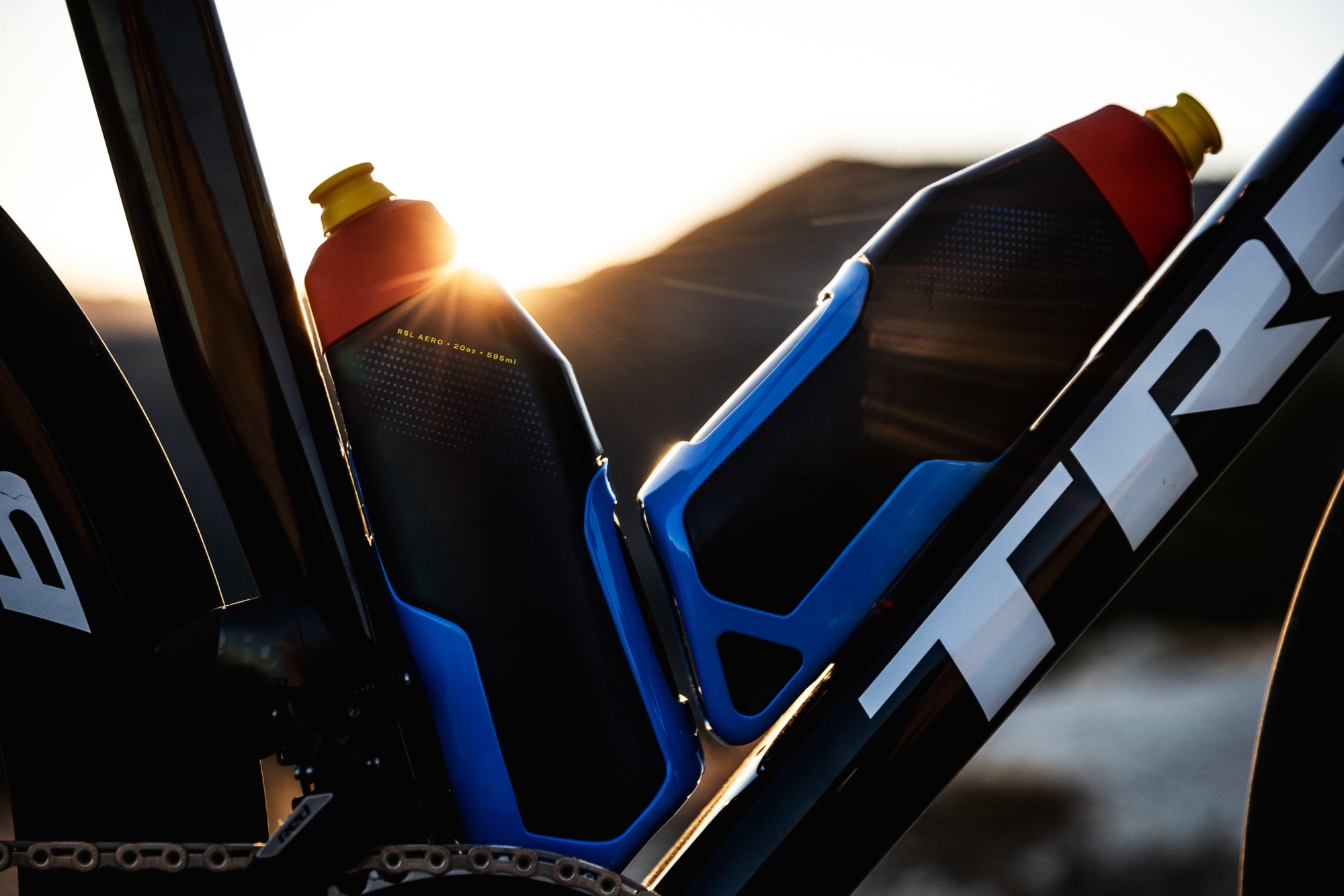
Elsewhere the IsoFlow system that was introduced on the Gen 7 Madone remains, but has been adapted. Trek says it’s lighter now and 80% more vertically compliant to increase comfort while at the same time delivering aerodynamic improvements. It’s also said to help make the Gen 8 Madone 24% more vertically compliant than the Emonda SLR. Additionally, tire clearance has been increased to 32mm, which should further aid comfort.
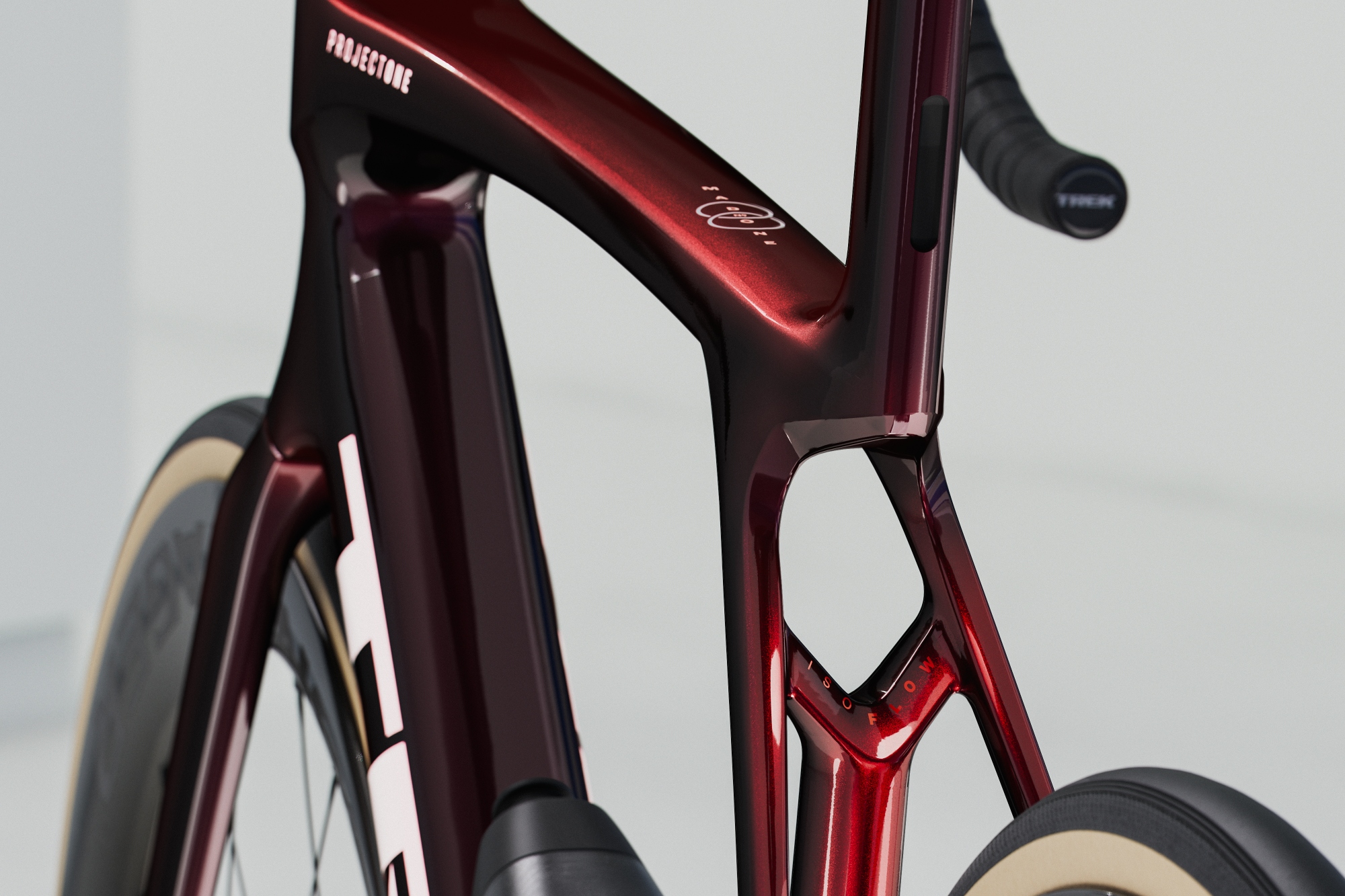
Another area impacted by the whole rider system approach are the Gen 8 handlebars. Noticeably more chunky than the slimline cockpit of the previous generation, the top of the bars is both thicker and more rounded. Trek says, in isolation, the new bars are less aerodynamic than their predecessors. However, with a rider on board, “the wake of the thicker bars slightly reduces drag on their pedalling legs by slowing the air down in front of them.” Like before, the bars are 3cm narrower at the hoods than the drops, promoting a more ‘tucked in’ riding position that’s shown to save a considerable number of watts.
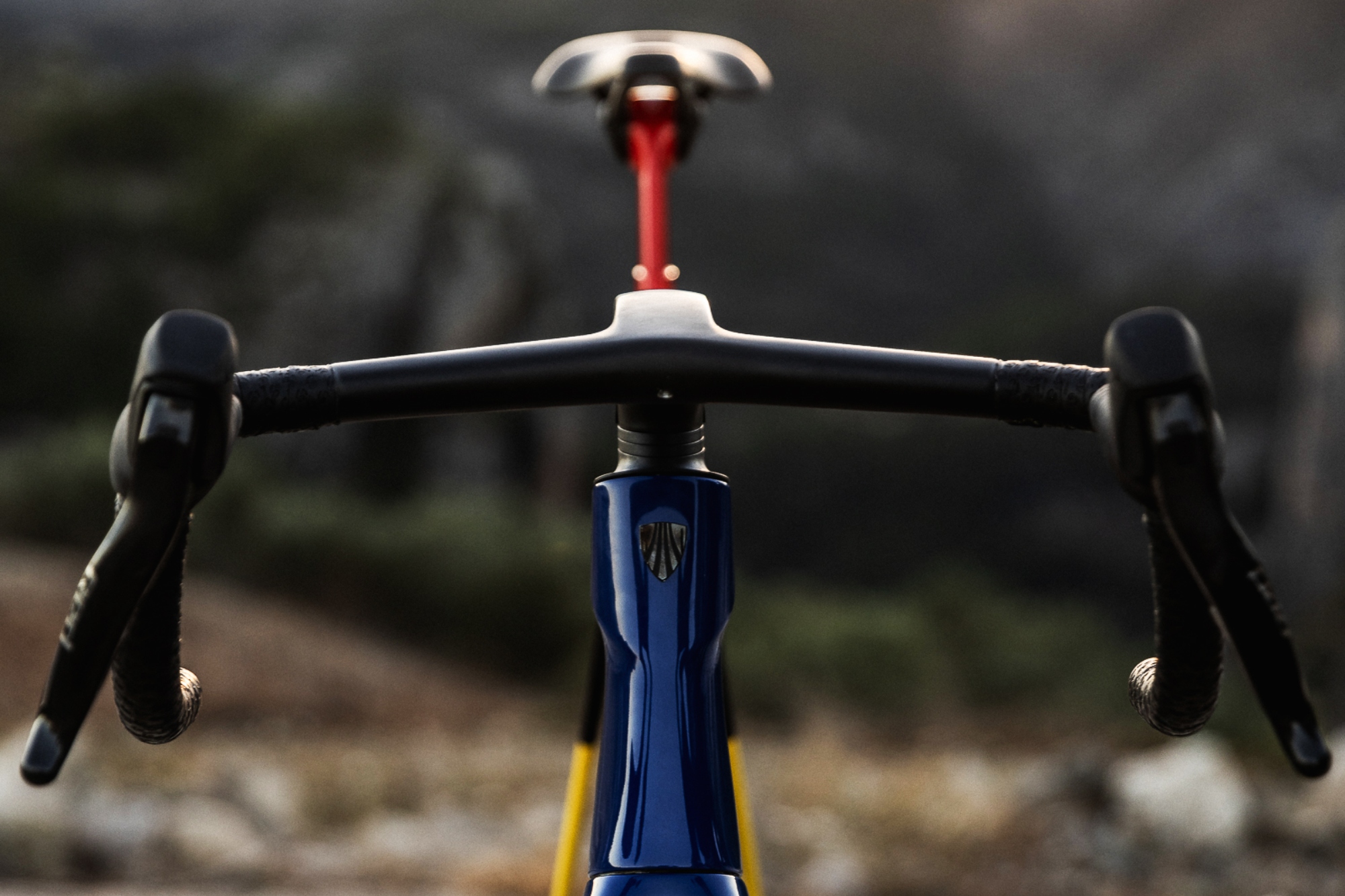
Perhaps unsurprisingly given that the Lidl-Trek WorldTour teams use SRAM groupsets, the Madone Gen 8 has adopted the Universal Derailleur Hanger (UDH) standard. It's kept the T47 bottom bracket, which is used across Trek’s line of road and gravel bikes. It’s worth noting that the SLR frame is only compatible with electric groupsets
New sizing
For this iteration of the Madone, Trek has reduced the number of sizes available from eight to six. It says that the stack and reach of the new bike fit neatly into fewer sizes without “a major impact to overall fit”. The sizing now runs from XS to XL (with a ML) and uses Trek’s ‘road race’ geometry, which is closely related to the previous H1.5 geometry.
So how does this compare with both the outgoing Madone and the Emonda SLR? The Gen 8 Madone in a size ML has a stack height of 56.2cm and a reach of 38.9cm. A comparable size 56cm Gen 7 Madone and an Emonda SLR have almost identical numbers, with a stack height of 56.3cm and a reach of 39.1.
The more skeptical may see the reduction of sizes offered as just another way of reducing production costs and it will be interesting to hear feedback from existing Trek customers on whether they've been able to move seamlessly from the old sizing to the new without having to adjust their set-ups considerably.
The range explained
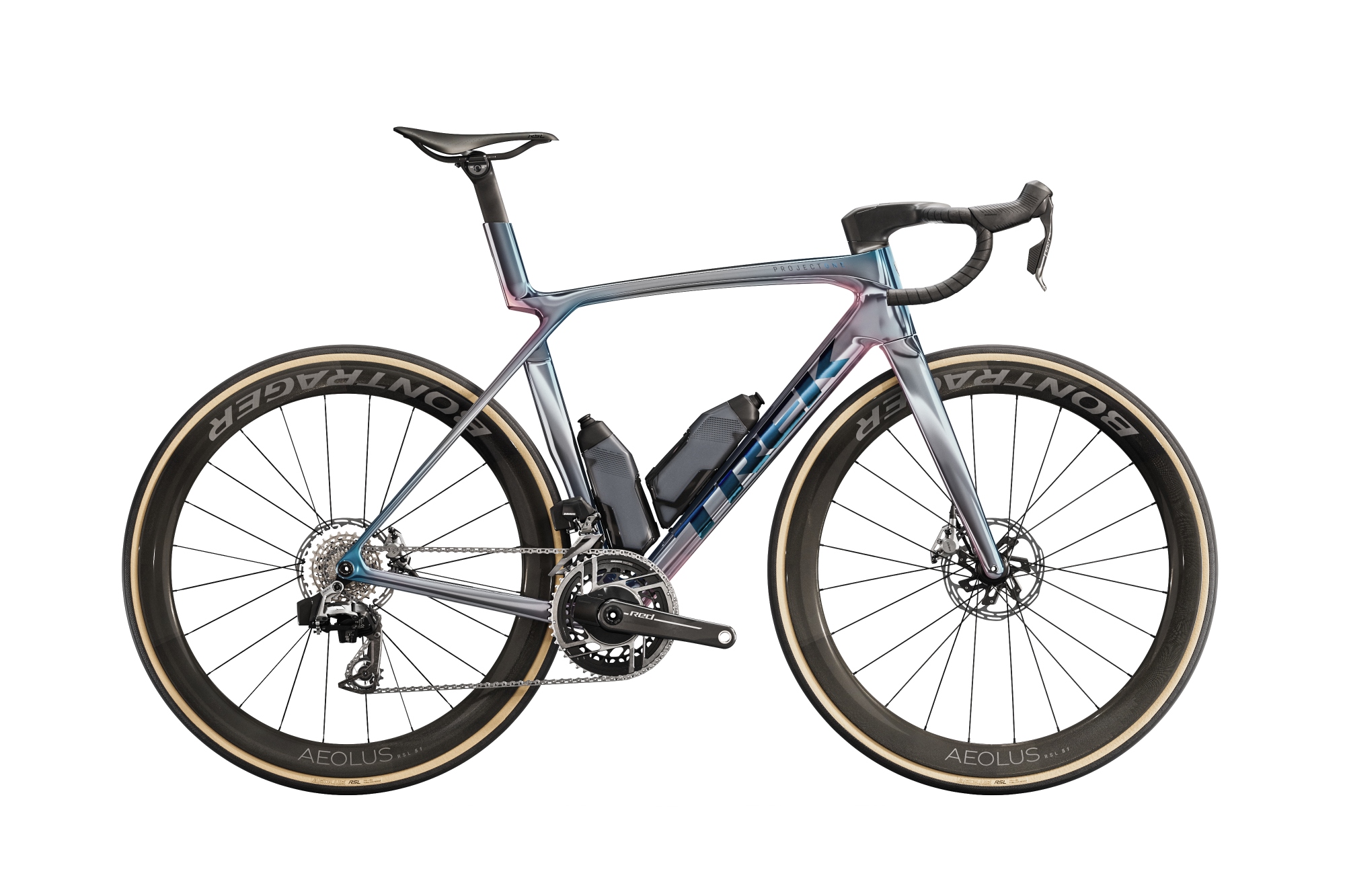
The SLR is offered in two models, the SLR 9 and the SLR 7. The 9 offers a groupset choice of SRAM Red AXS or Shimano Dura-Ace Di2, while the 7 comes with either SRAM Force AXS or Shimano Ultegra Di2. All four options feature the Aero RSL cockpit, Bontrager Aeolus RSL 51 carbon wheels with DT Swiss 240 hubs and 28mm Pirelli P Zero Race tires. The SLR 9 AXS is the lightest option, weighing a claimed 7kg / 15.44lbs for a size ML.
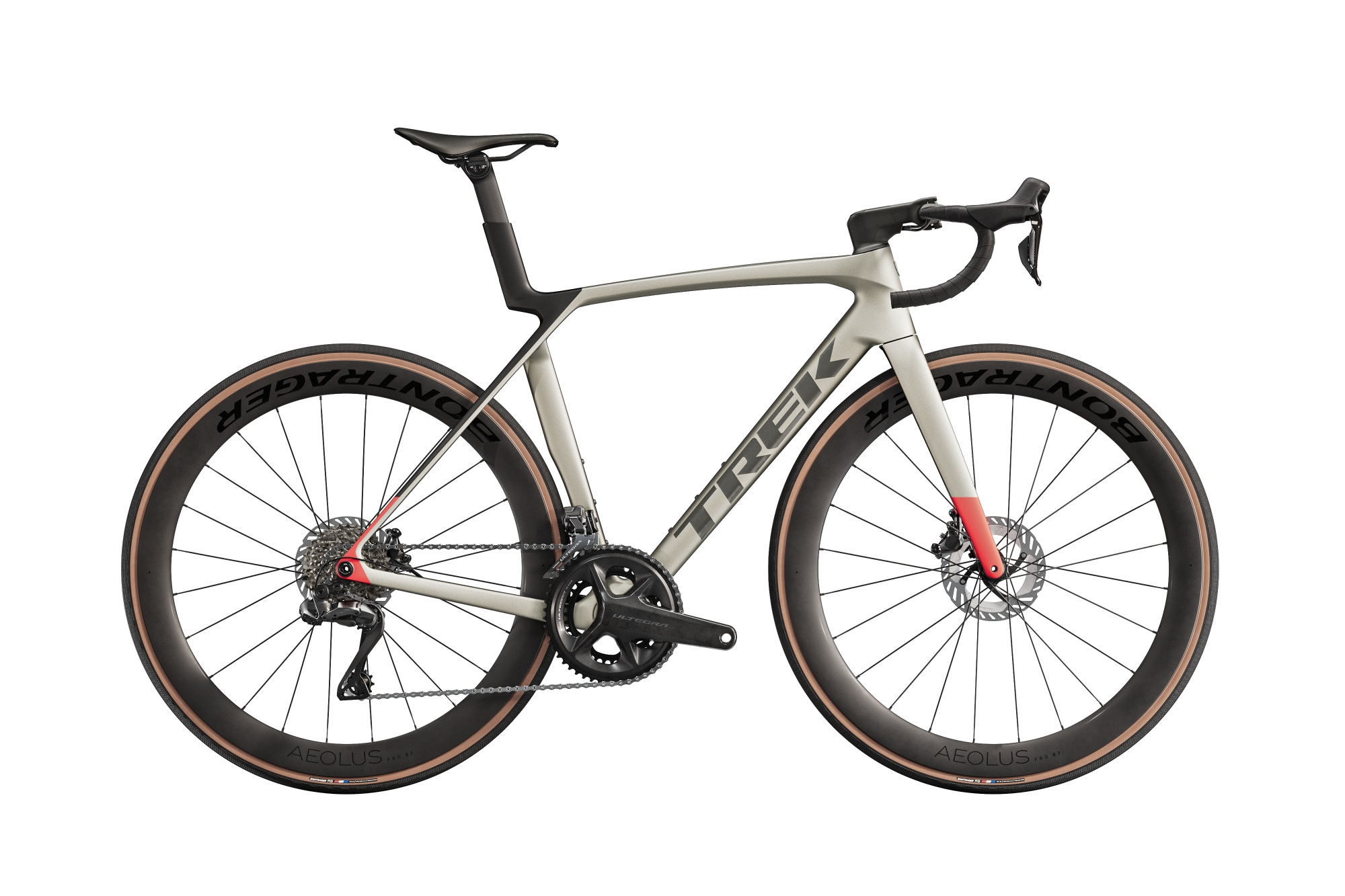
The new Madone also comes in the more wallet-friendly SL version. While it features the same frame technology it uses Trek’s 500 Series OCLV carbon and is equipped with a traditional two-piece bar and stem. The frameset weight rises to 1,417g, with the lightest SL option being the SL 7, which weighs a claimed 7.88kg / 17.37lbs and is equipped with Shimano Ultegra Di2 and a Bontrager Aeolus Pro 51 wheelset. The entry level SL 5 is equipped with Shimano 105 and Bontrager Paradigm SL wheels and weighs a claimed 8.7kg / 19.18lbs.
Both the SLR and the SL are also offered as framesets only.
Pricing
- Madone SLR 9 AXS: £12,500 / $13,499
- Madone SLR 9: £12,000 / $12,999
- Madone SLR 7 AXS: £8,500 / $9,499
- Madone SLR 7: £8,000 / $8,999
- Madone SLR frameset: £4,575 / $5,999
- Madone SL 7: £6,000 / $6,499
- Madone SL 6 AXS: £4,750 / $5,999
- MAdone SL 6: £4,250 / $5,499
- Madone SL 5: £3,250 / $3,499
- Madone SL frameset: £2,750 / $3,799







